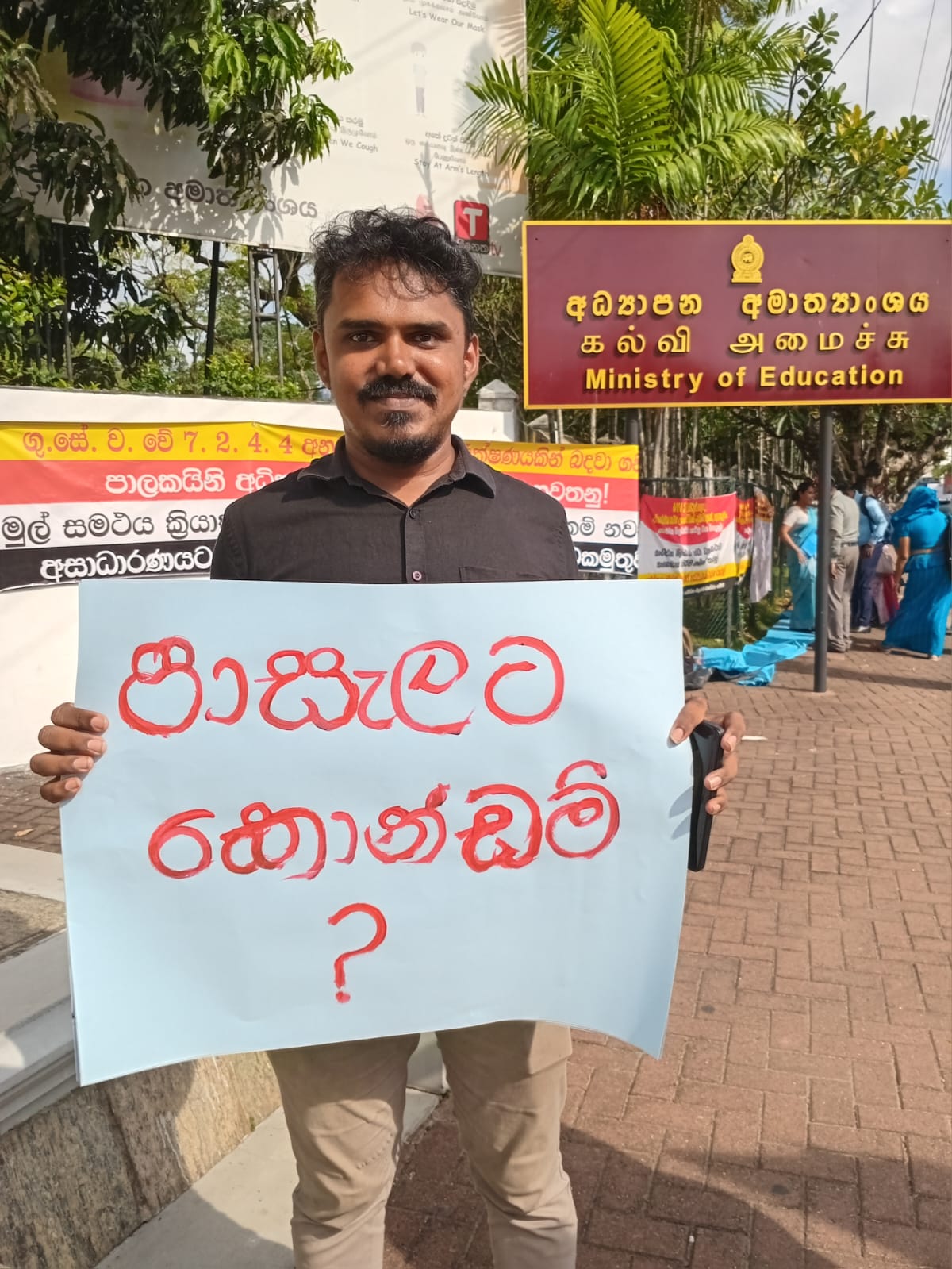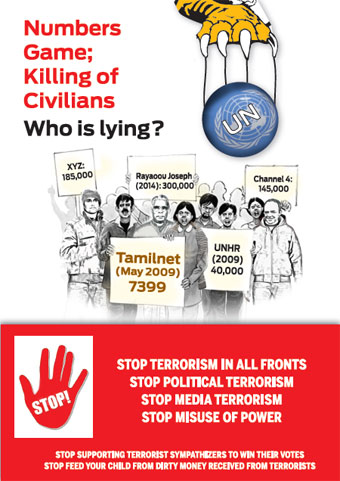FROM “CEYLON” TO “SRI LANKA”
KAMALIKA PIERIS
The British name for the island, ‘Ceylon’ came from the Dutch ‘Zeylan’ . ‘Zeylan’ came from the Portuguese ‘Ceilao’ . Ceilao came from the Arabic ‘Zailan’ which was derived from the indigenous ‘Sinhala’. Therefore these were all versions of the indigenous name, Sinhala. The island continued to be called ‘Ceylon’ during the period of British rule (1815-1948). When Sri Lanka re-gained its independence in 1948, it did so as ‘Ceylon.’ Since this was derived from ‘Sinhala’ we could say that the island was continuing under its original name.
But during British rule, the name ‘Lanka’ gained ground, displacing the word ‘Sinhala’. There was the Young Lanka League (1915), Lanka Swarajaya and Lanka Samasamaja Party (1935). The first Sinhala newspaper was ‘Lankaloka’ (1860) followed by’ Lak rivi kirana,’ ‘Lakmina’, ‘Lakmini pahana’ and ‘Lankadipa’ (1947). The first Buddhist printing presses were Lankaloka (1861) and Lankopakara (1862). There were Sinhala literary associations such as ‘Samastha lanka kavi sammelenaya’. Coins and currency notes carried the word ‘Lanka’ in Sinhala and ‘Ceylon’ in English. The arms of the Dominion of Ceylon (1948-1972) carried the words ‘Ceylon’ in English and ‘Lanka’ in Sinhala and Tamil.
The earliest literary references to Lanka are found in the Mahabharata (compiled between 4th century BC and 4thcentury AD) and in a Sanskrit inscription dated to 4th century AD. Scholars researching into the ancient history of India found several Lankas within India. There was one Lanka in Assam, another on the Narmada river near Maheshvara, and a third in the Vindya mountains at Amarakanthaka.
- Indrapala observed that the word Lanka has survived in place names right along the eastern part of the subcontinent, from Assam to Andhra Pradesh. There are a number of islands in Krishna-Godavari delta with names ending with Lanka such as Gudivaka-Lanka. In Tamilnadu, there were references to uttaralankai, (lanka in the north) and tennilankai, (lanka in the south.) Indrapala said that Lanka appears to have been a generic name for ‘island.’ He pointed out that in Telegu ‘lanka’ means island even today. D.P.M. Weerakkody stated that Lanka in the Mundari language means ‘any distant country beyond the sea’.
The word ‘Lanka’ also occurs in Indian astronomy. In Indian astronomy Lanka is a concept, not a real place. In Indian astronomy there is an imaginary island called Lanka situated in the centre of the world. Indian astronomers use central latitude, the equator and a central longitude involving Ujjain as a starting point for their calculations .To combine these two, they imagined an island called Lanka situated on the equator and having the same latitude as Ujjain. This
Lanka is imaginary. Since this Lanka was said to be near the equator, researchers speculated that it could be in the Maldives, or in Indonesia at Sumatra, the Lingga islands or the Sunda Islands.
The Lanka referred to in the Ramayana is definitely not our Republic of Sri Lanka. D.P. Mishra points out that in the Ramayana a person has to go south over the mountain of Mahendra to come to Lanka and that you do not need to across a mountain to reach Ceylon. He says Lanka of Ravana is quite different from Ceylon . He also points out that the dramatist Rajasekera distinguished between Simhala and Lanka in his ninth century work, Balaramayana. The Ramayana ‘Lanka’ has now been located in the Godavari delta in India. Mishra says that the evidence points to the Trikanta Island at the north of the Godavari, which even now is called Lanka. There is other evidence that separates ‘Lanka’ from ‘Sinhaladvipa.’ Mahabharata distinguishes Simhala from Lanka. Brhatsamhita enumerates the countries of the south starting from left to right. It begins with Lanka and ends with Simhala.
The name Lanka does not appear in the early Sri Lankan inscriptions and is not extensively used in Sinhala texts either. However, in Pali commentaries the word Lanka is prominently used. Dipawamsa and Mahavamsa use it extensively. Dipawamsa uses it thirty times and Mahavamsa uses it more than forty times. The word ‘Lanka’ simply means an island. It would have been used as shorthand for Sri Lanka. On the other hand, it has been suggested that as Sri Lanka was the biggest island in the South Asian region, Lanka probably became an exclusive term for it.
In 1937 The State Council debated whether to change the name of the island from ‘Ceylon’ to ‘Sri Lanka’. They asked the Royal Asiatic society (Ceylon Branch) for an opinion. The RAS replied that the name ‘Ceylon’ had a well known history going back many centuries. The term is derived from Sinhala dvipa. They were not in favor of the change. (RAS journal Vol 33 no 90 1937 p 61) The Council members present at the time included D.B. Jayatilaka, (President), C.W.W. Kannangara, W.A. de Silva, G.P. Malalasekera, Dr Andreas Nell, E.W. Perera, C. Rasanayagam, E. Reimers, K. Vaithianathan and Aubrey Weinman
A commission was appointed in 1957 to recommend changes in place names of the island. This Commission recommended that the name of the island be changed to ‘Sri Lanka.’ The Commission stated that the island had been primarily known by variants of the name ‘Sinhala dvipa’. They admitted that Lanka was not the original name of the island and that the island had never been known as Lanka. They said that the mythical island in Ramayana named Lanka was not our island. The first meridian of Hindu astronomers is taken to have passed through Ujjain and Lanka, so Lanka must have been far to the west of our island. Ujjain is in Madhya Pradesh close to the west coast of India, Sri Lanka is to the east of India.
The Committee went on say that Lankas had been found in India and Indonesia. China had used the word Lanka for several different places in Asia. Hindu astronomer Varahamihira in his work “Virhat Samhita’ referred to Lanka and Sinhala as two different places. Nevertheless, the
Committee wanted the island renamed Sri Lanka because the word ‘Lanka’ had become popular. The example they used to support this assertion was the Lanka Sama Samaja Party. (SP 5 of 1957). What they were really doing was to ensure the elimination of the word ‘Sinhala’ from the name of the island.
In 1972 the island, which had been known as ‘Sinhala’ or ‘Sinhaladvipa’ throughout its history, became, without any good reason, the sovereign state of ‘Sri Lanka.’ History was removed from the school curriculum around that same time indicating that there was a deliberate desire to obliterate the historical identity of the island.
Commercially, the change of name from Ceylon to Sri Lanka has been perceived as negative. When you replace ‘Ceylon tea’ with ‘Sri Lanka tea’ prices won’t shoot up, they may collapse instead, said Al Ries. You change ‘Sri Lanka’ back to ‘Ceylon’ and you will immediately get tons of international publicity. Ceylon is globally associated with the best tea in the world. Replacing a name should add value to a product.( Business Times on Sunday. 24.5.15 p 4 )
Sri Lanka means ‘resplendent island” or ‘beautiful island.’ This is a description, not a name. Therefore the name of the island still remains ‘Sinhaladvipa’. The island has had this name for centuries and ‘Ceylon’ is also derived from this. ‘Sri Lanka’ cannot be a satisfactory substitute for a distinctive name like ‘Sinhaladvipa’.
Certain segments of the population now speak of the need to create a new Sri Lankan identity based on this meaningless label. They keep shouting, over and over again, that the island now needs a new identity. It is nonsense to talk of a ‘Sri Lankan’ identity. If my name is replaced by ‘senior citizen’ it will not change my history or personality. The same applies to Sri Lanka. Sri Lanka is ‘Sinhaladvipa’. That is its identity. A return to the original name ‘Sinhaladvipa’ abbreviated to ‘Sinhale’ or even ‘Ceylon’ will remove this artificial argument.
1784 Viewers








